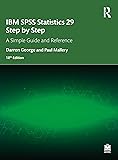All Categories


The CIPP Evaluation Model: How to Evaluate for Improvement and Accountability
Share Tweet
Get it between 2025-11-04 to 2025-11-11. Additional 3 business days for provincial shipping.
*Price and Stocks may change without prior notice
*Packaging of actual item may differ from photo shown
- Electrical items MAY be 110 volts.
- 7 Day Return Policy
- All products are genuine and original
- Cash On Delivery/Cash Upon Pickup Available








About The CIPP Evaluation Model: How To Evaluate For
The authoritative presentation of a leading evaluation approach, this book describes the CIPP (Context, Input, Process, and Product) Model’s origin, concepts, and procedures. Unlike many models, CIPP provides for feedback throughout a program. Richly illustrated with evaluation cases, the book covers methods for engaging stakeholders; designing, budgeting, and contracting evaluations; collecting, analyzing, and reporting information; and conducting metaevaluations. User-friendly features include 26 reproducible checklists and forms and references to relevant computer programs. Purchasers get access to a companion website where they can download and print the reproducible tools as well as supplementary materials, including the CIPP Evaluation Model Checklist. User-Friendly Features *Introduction boxes providing an overview of each chapter. *Within-chapter recaps of key concepts. *End-of-chapter review questions and exercises. *End-of-book glossary. *Appendix listing hundreds of CIPP evaluations across disciplines.




















